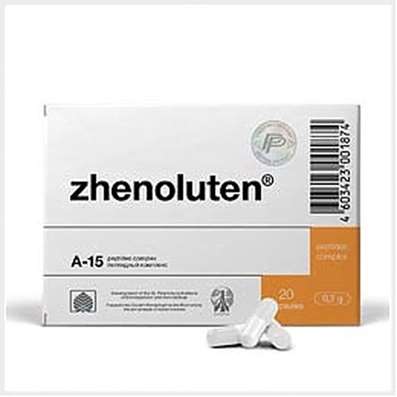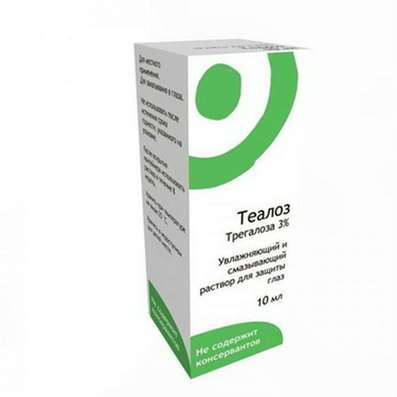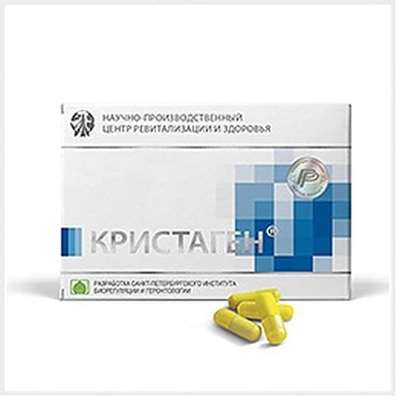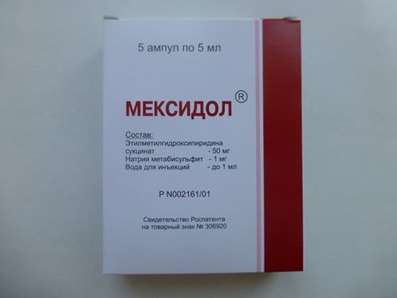Instruction for use: Empegfilgrastimum
I want this, give me price
Trade name of the drug – Pegylated recombinant granulocyte human colony-stimulating factor, Ekstimiya
The Latin name of the substance Empegfilgrastimum
Empegfilgrastim (genus. Empegfilgrastimi)
Chemical name
[1- (N- {4- [omega-methoxypoly (oxyethylene)] butyl} -L-methionine)] human granulocyte colony-stimulating factor (pluripoetin)
Pharmacological group:
Stimulators of hematopoiesis
The nosological classification (ICD-10)
C80 Malignant neoplasm without specification of localization: Malignant tumor; Malignant neoplasm; Malignant neoplasms of different localization; Malignant tumors; Eton-Lambert syndrome; Locally prevalent forms of malignant neoplasms; Metastatic ascites; Metastatic ascites; Cerebellar degeneration in tumors; Hereditary cancers; Metastatic tumors; Cancer ascites; Solid tumors
D72.8.0 * Leukopenia: Autoimmune neutropenia; Congenital neutropenia; Granulocytopenia; Idiopathic and drug-induced leukopenia; Idiopathic neutropenia; Leukopenia aplastic; Leukopenia radiation; Leukopenia with radiation therapy; Radiation leukopenia; Hereditary neutropenia; Neutropenia in patients with AIDS; Periodic neutropenia; Radiation leukopenia; Persistent neutropenia; Febrile neutropenia; Two-stage cytopenia; Radiation cytopenia; Neutropenia is cyclic
Z51.1 Chemotherapy for neoplasm: Cystitis hemorrhagic, caused by cytostatics; Urotoxicity of cytostatics
Characteristics of the substance Empegfilgrastimum
Stimulator of leukopoiesis. Empagfilgrastim is a covalent filgrastim conjugate (recombinant human granulocyte colony-stimulating factor, rhG-CSF) with one molecule of polyethylene glycol with a molecular mass of 30 kDa, with a prolonged effect as a result of decreased renal clearance.
Pharmacology
Mode action - Leukopoietic.
Pharmacodynamics
Empagfilgrastim binds to the G-CSF receptor like filgrastim and pegfilgrastim. Similarly to filgrastim, empagfilgrastim regulates the formation and release of neutrophils from the bone marrow, markedly increases the number of neutrophils with normal or increased functional activity (chemotaxis and phagocytosis) in the peripheral blood for 24 hours and causes a slight increase in the number of monocytes and / or lymphocytes.
According to clinical studies, it has been established that a single infusion of embagfilgrastim after each cycle of myelosuppressive cytotoxic therapy reduces the duration of grade 4 neutropenia by approximately 2-fold compared with the daily administration of filgrastim. The incidence of febrile neutropenia was comparable to the frequency in the group of patients receiving daily filgrastim. The total frequency of neutropenia after chemotherapy with a single administration of empegilgrastim and daily administration of filgrastim was comparable at the first cycle, and in subsequent cycles there was a clear tendency to decrease the overall frequency of neutropenia in the empagglilgastim group with each cycle compared with the filgrastim group.
Pharmacokinetics
Suction. In healthy volunteers, after a single dose of various doses of empagfilgrastim (3-9 mg) C max, empagglilgrastima in the blood was attained on average 36-48 hours. In patients with breast cancer receiving chemotherapy with a combination of docetaxel and doxorubicin, during the first cycle of chemotherapy after A single infusion of empagglilgrastim in a dose of 7.5 mg C max, an average of 192.143.6 pg / ml, was achieved in the blood on average 61 hours, and T1 / 2 was 78 hours.
Distribution. The concentration of empagglilgrastim in the blood serum is maintained during the neutropenia period after myelosuppressive chemotherapy. The average systemic exposure of AUC0-∞ to empegilggrastim after a single sc administration at 7.5 mg was 27,718,704 pg · h / ml.
Excretion. Empagfilgrastima excretion is nonlinear, dose-dependent, saturable. Clearance is mainly carried out by neutrophils. In accordance with the self-regulating mechanism of clearance, the serum concentration of empagglilgrastim slowly decreases during a transient reduction in the number of neutrophils associated with chemotherapy and rapidly after the start of recovery of the number of neutrophils. In patients with breast cancer receiving chemotherapy with a combination of docetaxel and doxorubicin, during the first cycle of chemotherapy after a single injection of 7.5 mg of empagglilgrastim, the clearance was 368.8 ml / (h · kg), and the elimination constant was 0, 0087 h-1.
Pharmacokinetics in special patient groups
The pharmacokinetics of empegilgrastim in special groups of patients (patients with renal and hepatic insufficiency, children and elderly patients) have not been studied to date.
Patients with impaired liver and kidney function. Since the mechanism of excretion of empagglilgrastima is not associated with the kidney or liver (excretion is mainly carried out by neutrophils), changes in its properties are not expected in patients with impaired function of these organs.
Children and patients of advanced age. Data on the use of empagfilgrastim in children or elderly patients (over 65 years) are not available.
Application of the substance Empegfilgrastimum
To reduce the duration of neutropenia, the frequency of febrile neutropenia and infections manifested by febrile neutropenia, with cytostatic therapy for malignant neoplasms.
Contraindications
Hypersensitivity to proteins obtained using E. coli, filgrastim, empagfilgrastima, pegfilgrastimu, pegylated proteins; Neutropenia in chronic myelogenous leukemia and myelodysplastic syndromes; Acute leukemia; To increase the doses of cytotoxic chemotherapy higher than those established in dosing regimens; Simultaneous administration with cytotoxic chemo- and radiotherapy; Pregnancy and the period of breastfeeding; Age to 18 years.
Restrictions
Malignant and premalignant diseases of myeloid nature (including acute myelogenous leukemia de novo and secondary); In combination with high-dosage chemotherapy; Sickle-cell anemia.
Application of pregnancy and breastfeeding
Studies in pregnant women have not been conducted. The potential risk associated with influencing an embryo or human fetus is unknown.
Studies in lactating women have not been conducted, so do not use empagfilgrastim during breastfeeding.
Side effects of the substance Empegfilgrastimum
To assess the incidence of adverse events, a classification was used according to WHO recommendations: very often (≥10%); Often (≥1% and <10%); Infrequently (≥0.1% and <1%); Rarely (≥ 0.01% and <0.1%); Very rarely (<0.01%).
Below is a list of adverse events reported in patients who received empeggylgrastim after cytotoxic chemotherapy and in healthy volunteers as part of a clinical trial. The vast majority of adverse events were due to a major malignant disease or cytotoxic chemotherapy and were not associated with the use of empagglilgrastim.
Infectious and parasitic diseases: often - an acute respiratory viral infection.
On the part of the blood and lymphatic system: very often - anemia, thrombocytopenia, leukocytosis, neutrophilia, lymphocytosis, leukopenia, neutropenia and lymphopenia; Often - febrile neutropenia.
Leukopenia, neutropenia, lymphopenia and febrile neutropenia are probably related to the chemotherapy drugs used. A healthy case of spleen enlargement was recorded in healthy volunteers.
From the nervous system: often - headache, dizziness, paresthesia, sensory neuropathy.
From the side of the organ of vision: often - lacrimation.
From the heart: often - tachycardia, arrhythmia.
From the side of the vessels: often - arterial hypo - and hypertension, phlebitis.
From the respiratory system, chest and mediastinum: often - cough, dryness of the nasal mucosa.
From the gastrointestinal tract: very often - nausea, diarrhea; Often - stomatitis, vomiting, abdominal pain, indigestion, constipation, hemorrhoids, belching, itching of the gums, loss of appetite.
From the liver and biliary tract: very often - an increase in total bilirubin, an increase in AST, ALT, APF, LDH; Often - increase GGTP, pain in the right hypochondrium, hepatotoxicity.
From the skin and subcutaneous tissues: very often - alopecia; Often - dry skin of the face, flushing of the skin of the face, itching of the skin, change of nails.
From the musculoskeletal system and connective tissue: very often - arthralgia, ossalgia; Often - myalgia, back pain, pain in the extremities.
Ossalgia and arthralgia are undesirable reactions for G-CSF preparations. As a rule, they are weak or moderate and stop themselves.
From the side of the kidneys and urinary tract: very often - hypercreatininaemia; Often - increased levels of urea, proteinuria, bacteriuria, leukocyturia.
From the genitals and the breast: often - pain in the area of the breast, uterine bleeding.
General disorders and disorders at the injection site: very often - fever, weakness, fatigue; Often - local reactions (skin flushing at the injection site), edema, asthenia, flu-like syndrome, lymphostasis.
Laboratory and instrumental data: very often hyperglycemia, hyperalbuminaemia, hyperkalemia, hyperchloremia; Often hypernatremia, hyperuricemia.
Interaction
Studies devoted to specific interactions or metabolism have not been conducted.
Since empagglilgrastim is excreted mainly by neutrophils, i.e. With the help of a specific mechanism that does not intersect with the pathways of the metabolism of most drugs, the probability of drug interactions appears to be minimal.
Cytotoxic chemotherapy
Because of the possible sensitivity of rapidly dividing myeloid cells to cytotoxic therapy, empagfilgrastim should be administered 24 hours after the administration of cytotoxic chemotherapeutic agents.
Interaction with other hematopoietic growth factors and cytostatics is unknown.
It is known that lithium enhances the release of neutrophils. Although pharmacodynamic interaction with lithium is not proven either for filgrastim or for pegfilgrastim, its feasibility should be considered when using empagglilgrastim.
An evaluation of the safety and efficacy of empagfilgrastim in patients receiving chemotherapeutic drugs whose use is associated with delayed myelosuppression (eg, nitrosourea derivatives) has not been performed.
Signs of interaction empagfilgrastima with other drugs for the time being is not fixed.
Overdose
The maximum dosage of empagglilgrastim, studied in humans, is 9 mg once.
Symptoms: with the use of empagfilgrastim 9 mg in healthy volunteers, headache, myalgia, back pain, thrombocytopenia, hyperbilirubinemia, hyperuricemia, hyperglycemia, increased ACT, AP, hyponagraemia, hypochloraemia were observed.
All the undesirable events passed without consequences, either alone or after the application of symptomatic therapy (headache, myalgia, arthralgia, bone pains were stopped using NSAIDs). Thus, undesirable phenomena with an overdose do not differ from the phenomena when using drugs in the recommended doses.
The safety of empagfilgrastim in a dose of more than 9 mg has not been studied. With the introduction of higher doses of empegilgrastima, we can expect an increase in the described undesirable phenomena, hyperleukocytosis and the development of ricochet neutropenia.
Routes of administration
SC.
Precautions for the substance Empegfilgrastimum
Treatment with empagfilgrastim should be performed only under the supervision of a physician with experience in the use of G-CSF, provided that the necessary diagnostic capabilities are available.
Empagfilgrastim should not be used less than 14 days before, during, and less than 24 hours after the administration of cytotoxic chemotherapeutic agents. It is necessary to cancel the planned introduction of empagfilgrastim with an increase in the total number of leukocytes above 5 · 109 / L.
Use in special patient groups
Children: there are no recommendations for the use of empagfilgrastim in children and adolescents under the age of 18 (insufficient data).
Patients with renal / hepatic insufficiency: dose adjustment is not required.
G-CSF stimulates endothelial cells and can accelerate the growth of myeloid cells, including malignant cells, and some non-myeloid cells in vitro.
Empagfilgrastim should not be used in myelodysplastic syndromes, chronic myelogenous leukemia, secondary acute myelogenous leukemia, since its safety and effectiveness in these patient groups were not evaluated. Especially careful differential diagnosis between blasttransformation in chronic myelogenous leukemia and acute myelogenous leukemia.
The safety and efficacy of empagfilgrastima in patients with acute myelogenous leukemia have not been studied.
The safety and efficacy of empagfilgrastim in patients receiving high-dose chemotherapy have not been studied.
Cough, fever and shortness of breath, combined with radiographic infiltrative changes, impaired lung function, and an increase in the number of neutrophils may serve as signs of respiratory distress syndrome in adults. In this case, at the discretion of the doctor, empagfilgrastim should be canceled and appropriate treatment prescribed.
Very rare cases of rupture of the spleen after the administration of pegylated filgrastim preparations, and some with a fatal outcome, have been recorded, therefore it is necessary to carefully monitor the size of the spleen with the help of instrumental examination (ultrasound). It should be possible to splenomegaly or rupture of the spleen in patients with complaints of pain in the upper left part of the abdomen and / or in the upper part of the left shoulder.
Monotherapy empagfilgrastimom does not exclude the development of thrombocytopenia and anemia with the continuation of myelosuppressive chemotherapy in a full dose. It is recommended to regularly determine the number of platelets and hematocrit.
Empagfilgrastim should not be used to increase the doses of cytotoxic chemotherapy above those established in dosing regimens.
The development of sickle cell crises was associated with therapy with pegylated filgrastim in patients with sickle cell anemia. Therapy with empagfilgrastim in patients with sickle cell anemia should be conducted with caution only after a careful assessment of the potential risk and benefit. Single cases of leukocytosis 100 · 109 / l or more were observed in patients receiving empagfilgrastim. This phenomenon was of a temporary nature and was usually observed 24-48 hours after the administration of empagglilgrastim in accordance with its pharmacodynamic effects. Any side effects directly related to such leukocytosis are not described.
The safety and efficacy of empagglilgrastim in the mobilization of peripheral blood stem cells in patients were not appropriately evaluated. The increased hematopoietic activity of the bone marrow in response to therapy with growth factors leads to transient positive changes in the visualization of the bones, which should be taken into account when interpreting the results.
Influence on the ability to drive vehicles and mechanisms. Considering the possible side effects of empagfilgrastim, patients should be careful when driving vehicles and performing work that requires a high concentration of attention during the treatment period.

 Cart
Cart





